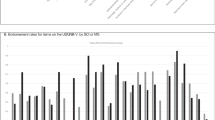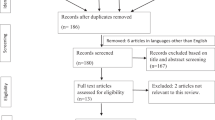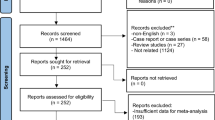Abstract
Bladder dysfunction is a common problem for patients with multiple sclerosis. The severity of symptoms often correlate with the degree of spinal cord involvement and, hence, the patient's general level of disability. The emphasis of management is now mainly medical and is increasingly offered by nonurologists. Treatments can be highly effective, relieving patients of what are otherwise very troublesome symptoms that would compound their neurological disability. This article gives an overview of the neural control of the bladder, followed by an explanation of the pathophysiology of detrusor overactivity secondary to neurological disease. A review of methods available for treating bladder dysfunction in multiple sclerosis then follows. The treatment options for this disorder are largely medical and include established first-line measures such as anticholinergics, clean intermittent self-catheterization and the use of desmopressin, as well as potential second-line agents, such as cannabinoids, intravesical vanilloids and intradetrusor botulinum neurotoxin type A. The diminishing role of surgical intervention is also discussed.
This is a preview of subscription content, access via your institution
Access options
Subscribe to this journal
Receive 12 print issues and online access
$209.00 per year
only $17.42 per issue
Buy this article
- Purchase on Springer Link
- Instant access to full article PDF
Prices may be subject to local taxes which are calculated during checkout





Similar content being viewed by others
References
Litwiller SE et al. (1999) Multiple sclerosis and the urologist. J Urol 161: 743–757
Betts CD et al. (1993) Urinary symptoms and the neurological features of bladder dysfunction in multiple sclerosis. J Neurol Neurosurg Psychiatry 56: 245–250
Hawker KS and Frohman EM (2001) Bladder, Bowel, and Sexual Dysfunction in Multiple Sclerosis. Curr Treat Options Neurol 3: 207–214
Miller H et al. (1965) Bladder Dysfunction in Multiple Sclerosis. Br Med J 5445: 1265–1269
Kidd DJ et al. (1993) Spinal cord MRI using multi-array coils and fast spin echo. II. Findings in multiple sclerosis. Neurology 43: 2632–2637
Zivadinov R et al. (2003) The use of standardized incidence and prevalence rates in epidemiological studies on multiple sclerosis. A meta-analysis study. Neuroepidemiology 22: 65–74
Koldewijn EL et al. (1995) Relationship between lower urinary tract abnormalities and disease-related parameters in multiple sclerosis. J Urol 154: 169–173
Nortvedt MW et al. (2001) Reduced quality of life among multiple sclerosis patients with sexual disturbance and bladder dysfunction. Mult Scler 7: 231–235
Fernandez O (2002) Mechanisms and current treatments of urogenital dysfunction in multiple sclerosis J Neurol 249: 1–8
Athwal BS et al. (2001) Brain responses to changes in bladder volume and urge to void in healthy men. Brain 124: 369–377
Matsuura S et al. (2002) Human brain region response to distention or cold stimulation of the bladder: a positron emission tomography study. J Urol 168: 2035–2039
Blok BF et al. (1997) A PET study on brain control of micturition in humans. Brain 120: 111–121
Blok BF et al. (1998) Brain activation during micturition in women. Brain 121: 2033–2042
Blok BF (2002) Central pathways controlling micturition and urinary continence. Urology 59 (Suppl 1): S13–S17
Blaivas JG and Barbalias GA (1984) Detrusor-external sphincter dyssynergia in men with multiple sclerosis: an ominous urologic condition. J Urol 131: 91–94
de Groat WC et al. (1990) Mechanisms underlying the recovery of urinary bladder function following spinal cord injury. J Auton Nerv Syst 30 (Suppl): S71–S77
Birder L et al. (1998) Adrenergic- and capsaicin-evoked nitric oxide release from urothelium and afferent nerves in urinary bladder. Am J Physiol 275: F226–F229
Andersson KE (2001) The basis for drug treatment of the overactive bladder. World J Urol 19: 294–298
Abrams PL et al. (2003) The standardisation of terminology in lower urinary tract function: report from the standardisation sub-committee of the International Continence Society. Urology 61: 37–49
Wheeler JS Jr et al. (1983) The changing neurourologic pattern of multiple sclerosis. J Urol 130: 1123–1126
Ciancio SJ et al. (2001) Urodynamic pattern changes in multiple sclerosis. Urology 57: 239–245
Awad SA et al. (1984) Relationship between neurological and urological status in patients with multiple sclerosis. J Urol 132: 499–502
Lycklama A et al. (1998) Brain and Spinal cord abnormalities in multiple sclerosis. Correlation between MRI parameters, clinical subtypes and symptoms. Brain 121: 687–697
Kim Y et al. (1998) The correlation of urodynamic findings with cranial magnetic resonance imaging findings in multiple sclerosis. J Urol 159: 972–976
Ukkonen M et al. (2004) Urodynamic findings in primary progressive multiple sclerosis are associated with increased volumes of plaques and atrophy in the central nervous system. Acta Neurol Scand 109: 100–105
Sirls LT et al. (1994) Role of limited evaluation and aggressive medical management in multiple sclerosis: a review of 113 patients. J Urol 151: 946–950
Chess-Williams R et al. (2001) The minor population of M3-receptors mediate contraction of human detrusor muscle in vitro. J Auton Pharmacol 21: 243–248
Sigala S et al. (2002) Differential gene expression of cholinergic muscarinic receptor subtypes in male and female normal human urinary bladder. Urology 60: 719–725
Harriss DR et al. (1995) Expression of muscarinic M3-receptors coupled to inositol phospholipid hydrolysis in human detrusor cultured smooth muscle cells. J Urol 154: 1241–1245
Clemett D and Jarvis B (2001) Tolterodine: a review of its use in the treatment of overactive bladder. Drugs Aging 18: 277–304
Todorova A et al. (2001) Effects of tolterodine, trospium chloride, and oxybutynin on the central nervous system. J Clin Pharmacol 41: 636–644
Kornhuber HH and Schutz A (1990) Efficient treatment of neurogenic bladder disorders in multiple sclerosis with initial intermittent catheterization and ultrasound-controlled training. Eur Neurol 30: 260–267
Fowler CJ (1996) Investigation of the neurogenic bladder. J Neurol Neurosurg Psychiatry 60: 6–13
Fowler CJ et al. (1992) Treatment of lower urinary tract dysfunction in patients with multiple sclerosis. Committee of the European Study Group of SUDIMS (Sexual and Urological Disorders in Multiple Sclerosis). J Neurol Neurosurg Psychiatry 55: 986–989
Seland PT et al. (1999) Urinary dysfunction and Multiple Sclerosis. Evidence-Based Management Strategies for Urinary Dysfunction in Multiple Sclerosis. Multiple Sclerosis Council for Clinical Practice Guidelines. Washington DC: PVA Publications
Kaplan SA et al. (1991) Bladder and sphincter behavior in patients with spinal cord lesions. J Urol 146: 113–117
Barbalias GA et al. (1998) Vesicourethral dysfunction associated with multiple sclerosis: clinical and urodynamic perspectives. J Urol 160: 106–111
Norlen L and Sundin T (1978) Alpha-adrenolytic treatment in patients with autonomous bladders. Acta Pharmacol Toxicol (Copenh) 43 (Suppl 2): S31–S34
O'Riordan JI et al. (1995) Do alpha-blockers have a role in lower urinary tract dysfunction in multiple sclerosis? J Urol 153: 1114–1116
Schwinn DA (2000) Novel role for alpha1-adrenergic receptor subtypes in lower urinary tract symptoms. BJU Int 86 (Suppl 2): S11–S20
Nathan P (1977) Emptying the paralysed bladder. Lancet 1: 377
Dasgupta P et al. (1997) The 'Queen Square bladder stimulator': a device for assisting emptying of the neurogenic bladder. Br J Urol 80: 234–237
Prasad RS et al. (2003) Lower abdominal pressure versus external bladder stimulation to aid bladder emptying in multiple sclerosis: a randomized controlled study. Clin Rehabil 17: 42–47
Rew DA and Rundle JS (1989) Assessment of the safety of regular DDAVP therapy in primary nocturnal enuresis. Br J Urol 63: 352–353
Hilton P et al. (1983) The use of desmopressin (DDAVP) for nocturia in women with multiple sclerosis. J Neurol Neurosurg Psychiatry 46: 854–855
Hoverd PA and Fowler CJ (1998) Desmopressin in the treatment of daytime urinary frequency in patients with multiple sclerosis. J Neurol Neurosurg Psychiatry 65: 778–780
Tubridy N et al. (1999) Long term use of desmopressin for urinary symptoms in multiple sclerosis. Mult Scler 5: 416–417
Gades NM et al. (2005) Prevelence of conditions potentially associated with lower urinary tract symptoms in men. BJU Int 95: 554–593
AUA Practice Guidelines Committee (2003) AUA guideline on management of benign prostatic hyperplasia (2003). Chapter 1: Diagnosis and treatment recommendations. J Urol 170: 530–547
House of Lords Committee on Science and Technology (1998) House of Lords Committee on Science and Technology. Cannabis: the scientific and medical evidence (9th report). London: Stationary Office
Brady CM et al. (2004) An open-label pilot study of cannabis-based extracts for bladder dysfunction in advanced multiple sclerosis. Mult Scler 10: 425–433
Zajicek J et al. (2003) Cannabinoids for treatment of spasticity and other symptoms related to multiple sclerosis (CAMS study): multicentre randomised placebo-controlled trial. Lancet 362: 1517–1526
Freeman R et al. (2004) The effect of cannabinoids on lower urinary tract symptoms in multiple sclerosis: a randomised placebo controlled trial (CAMS-LUTS study). Neurourol Urodyn 23: 607 (A149)
Fowler CJ et al. (1992) Intravesical capsaicin for neurogenic bladder dysfunction. Lancet 339: 1239
de Seze M et al. (1999) Intravesical instillation of capsaicin in urology: A review of the literature. Eur Urol 36: 267–277
Appendino G and Szallasi A (1997) Euphorbium: modern research on its active principle, resiniferatoxin, revives an ancient medicine. Life Sci 60: 681–696
Giannantoni A et al. (2002) Intravesical capsaicin versus resiniferatoxin in patients with detrusor hyperreflexia: a prospective randomized study. J Urol 167: 1710–1714
Cruz F (2002) Vanilloid receptor and detrusor instability. Urology 59 (Suppl 1): S51–S60
Brady CM et al. (2004) Parallel changes in bladder suburothelial vanilloid receptor TRPV1 (VR1) and pan-neuronal marker PGP9.5 immunoreactivity in patients with neurogenic detrusor overactivity (NDO) following intravesical resiniferatoxin treatment. BJU Int 93: 770–776
de Seze M et al. (2004) Intravesical capsaicin versus resiniferatoxin for the treatment of detrusor hyperreflexia in spinal cord injured patients: a double-blind, randomized, controlled study. J Urol 171: 251–255
Schurch B et al. (2000) Botulinum-A toxin for treating detrusor hyperreflexia in spinal cord injured patients: a new alternative to anticholinergic drugs? Preliminary results. J Urol 164: 692–697
Reitz A et al. (2004) European experience of 200 cases treated with botulinum-A toxin injections into the detrusor muscle for urinary incontinence due to neurogenic detrusor overactivity. Eur Urol 45: 510–515
Apostolidis A et al. (2005) Decreased sensory receptors P2x3 and TRPV1 in suburothealial nerve fibres following intradetrusor injections of botulinum toxin for human detrusor overactivity. J Urol 174: 977–983
Popat R et al. (2005) A comparison between the response of patients with idiopathic detrusor overactivity (IDO) and neurogenic detrusor overactivity (NDO) to the first intradetrusor injection of botulinum A toxin. J Urol 174: 984–988
Harper M et al. (2003) A minimally invasive technique for outpatient local anaesthetic administration of intradetrusor botulinum toxin in intractable detrusor overactivity. BJU Int 92: 325–326
Kalsi V et al. (2005) A cost consequence model for botulinum toxin-a used in the treatment of 89 patients with detrusor overactivity: preliminary results. Eur Urol 4: 104
Chancellor MB and Blaivas JG (1993) Multiple Sclerosis. Probl Urol 7: 15–33
Goldwasser B and Webster GD (1986) Augmentation and substitution enterocystoplasty. J Urol 135: 215–224
Luangkhot R et al. (1991) Ileocecocystoplasty for the management of refractory neurogenic bladder: surgical technique and urodynamic findings. J Urol 146: 1340–1344
Chartier-Kastler EJ et al. (2000) Long-term results of sacral nerve stimulation (S3) for the treatment of neurogenic refractory urge incontinence related to detrusor hyperreflexia. J Urol 164: 1476–1480
Barnes DG et al. (1993) Management of the neuropathic bladder by suprapubic catheterisation. Br J Urol 72: 169–172
Author information
Authors and Affiliations
Corresponding author
Ethics declarations
Competing interests
The authors declare no competing financial interests.
Rights and permissions
About this article
Cite this article
Kalsi, V., Fowler, C. Therapy Insight: bladder dysfunction associated with multiple sclerosis. Nat Rev Urol 2, 492–501 (2005). https://doi.org/10.1038/ncpuro0323
Received:
Accepted:
Issue Date:
DOI: https://doi.org/10.1038/ncpuro0323
This article is cited by
-
Overactive bladder and multiple sclerosis in the University Hospital of Oujda
African Journal of Urology (2023)
-
Catheter Use in Neurogenic Lower Urinary Tract Dysfunction—Can Shared Decision-Making Help Us Serve Our Patients Better?
Current Bladder Dysfunction Reports (2023)
-
Quality of life among patients with multiple sclerosis and voiding dysfunction: a cross-sectional study
BMC Urology (2020)
-
The prevalence of lower urinary tract symptoms based on individual and clinical parameters in patients with multiple sclerosis
BMC Neurology (2020)
-
MicroRNA-219c-5p regulates bladder fibrosis by targeting FN1
BMC Urology (2020)



